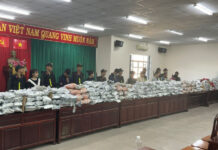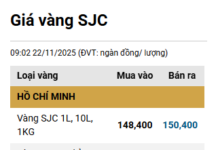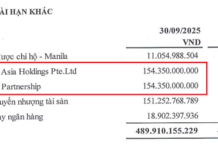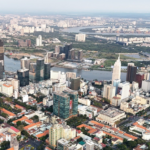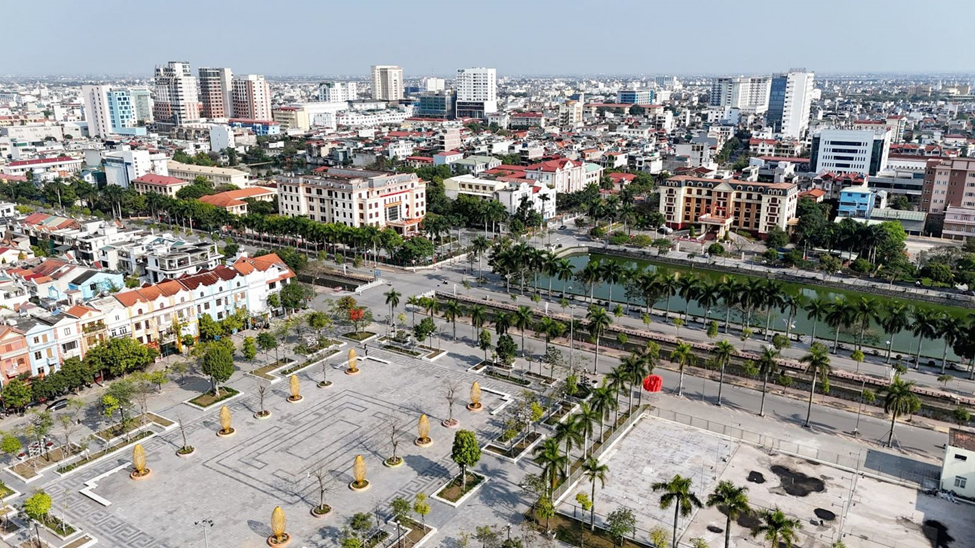This capital flow targets projects with key elements supporting sustainable growth, such as connectivity infrastructure, comprehensive legal frameworks, diverse and unique experiential amenities, and efficient commercial exploitation potential.
The Dual Momentum of Suburban Real Estate
Discussing the real estate landscape in Ho Chi Minh City, industry experts highlight a clear trend of professional capital moving away from the city center. This shift occurs as property prices have surpassed the affordability threshold for many investors, narrowing profit margins. In central districts, terraced house prices have skyrocketed, reaching 250-300 million VND/m² on average by Q2/2025, with some areas hitting 700 million VND/m² and even 1 billion VND for commercial townhouses and villas in urban areas like Sala.
According to Ms. Duong Thuy Dung, CEO of CBRE Vietnam, despite improved supply in Q3, the market remains tight relative to demand, pushing prices upward in both primary and secondary markets. This has accelerated the migration to suburban areas.
CBRE reports that primary terraced house prices in central areas have declined by 3% annually, while secondary market growth has slowed compared to 2020-2022. This means higher investment costs with thinner returns, and high rental prices make these properties less appealing.
The price gap prompts investors to weigh investment efficiency. With the same capital, 30% of a central terraced house’s value can purchase an entire suburban property with faster appreciation potential. Consequently, investment capital is no longer concentrated in the city center but is seeking new opportunities in suburban areas.

Capital is flowing into suburban real estate in Ho Chi Minh City
Additionally, the Southern market has seen an influx of Northern capital, creating dual momentum for Ho Chi Minh City’s suburbs. Batdongsan.com.vn’s latest report shows that Northern capital is shifting South due to growth potential. In the first half of the year, 75% of property buyers in the city were from outside, with 61% from Northern provinces. Specifically, Hanoi investors accounted for 33%, followed by Hai Phong, Ninh Binh, and Quang Ninh.
Mr. Bui Xuan Hien, Chairman of Southern Homes Vietnam, notes that investors now prioritize strategic locations over fleetingly vibrant areas. Many focus on city gateways with developing infrastructure, particularly areas connected by key routes like highways, ring roads, or upcoming metro lines.
Investors are also drawn to areas with lower prices but well-planned development, attracting residents and businesses. These areas offer two advantages: they align with the trend of population decentralization to satellite cities and provide commercial exploitation opportunities.
“Many investors prioritize projects with clear profitability and minimal risk. This is reflected in developers’ commitments, such as accelerated project timelines, on-time handover guarantees, established communities, and diverse future value drivers,” Mr. Hien emphasized.
Capital Flows Toward Real Projects, Real Value, and Immediate Returns
The capital shift is not random but a natural market cycle response as central areas reach saturation, making suburbs the new growth frontier. Investor caution has established new criteria. Mr. Vu Thanh Le, Director of Dai Phat, states, “A sustainable project in this phase must be real, clear, and long-term: fully legal, profit-focused, and community-oriented for long-term development.”
In Southern Ho Chi Minh City, the Long Hau – Can Giuoc area is emerging as a new hotspot due to its complete infrastructure and rapid urbanization. Notable projects like Eco Retreat, 826EC, Waterpoint, and T&T City Millennia stand out for their unique advantages.
Among these, T&T City Millennia is highly regarded for its advanced development, evidenced by its complete legal framework, stable progress, and consistent 10-12% annual secondary market growth.

T&T City Millennia, with its completed infrastructure and transparent legal framework, is a key project in Southern Ho Chi Minh City
Strategically located, the project is connected to the Ben Luc – Long Thanh Expressway, set to open in 2026, and is near Ring Road 4, Nguyen Huu Tho, and the Ben Thanh – Hiep Phuoc metro line. This area is a natural growth buffer for Ho Chi Minh City’s southward expansion, as outlined in the 2035 development strategy, ensuring long-term growth. Secondary market prices here are rising 10-15% annually.
As the real estate market enters a selective phase, projects with integrated planning and robust social infrastructure are gaining traction. Well-equipped communities with entertainment hubs and modern commercial streets tend to urbanize faster, providing a solid foundation for business growth. This attracts both residents and SMEs seeking commercial opportunities.
The capital shift to suburban areas reflects a new investment trend. Investors are moving to areas with clear planning, large land banks, and sustainable growth potential. This aligns with market dynamics: capital naturally seeks higher profit margins with lower risk in the next growth cycle.
Iconic Tower in Ho Chi Minh City Elevates Every Home Within Its View
Landmark 81 stands as not only an architectural icon of Ho Chi Minh City but also a new benchmark for apartments with breathtaking views. Real estate agents reveal that often, clients are so captivated by the sight of Landmark 81 that they instantly decide to purchase a unit with this stunning vista.
Sprint to Disburse Public Investment Capital: Ho Chi Minh City’s Key Projects in the Final Stretch
With just two months left in the 2025 capital disbursement period, several project management boards in Ho Chi Minh City have only managed to disburse over 50% of their planned budget. The remaining capital, amounting to thousands of billions of dong, necessitates a significant acceleration in efforts to achieve the 100% disbursement target.
Mega Metro Project Connecting Ho Chi Minh City Center to Northwest Gateway Proposed for Capital Increase to Over $2.2 Billion, Set to Break Ground Early Next Year
The Ho Chi Minh City Urban Railway Management Board has proposed a significant increase in the investment for the Metro Line No. 2 project, specifically the Ben Thanh – Tham Luong section. The total investment is set to rise by over 4,000 billion VND, reaching a new total of 52,047 billion VND. The official groundbreaking ceremony is scheduled for January 15, 2026.




